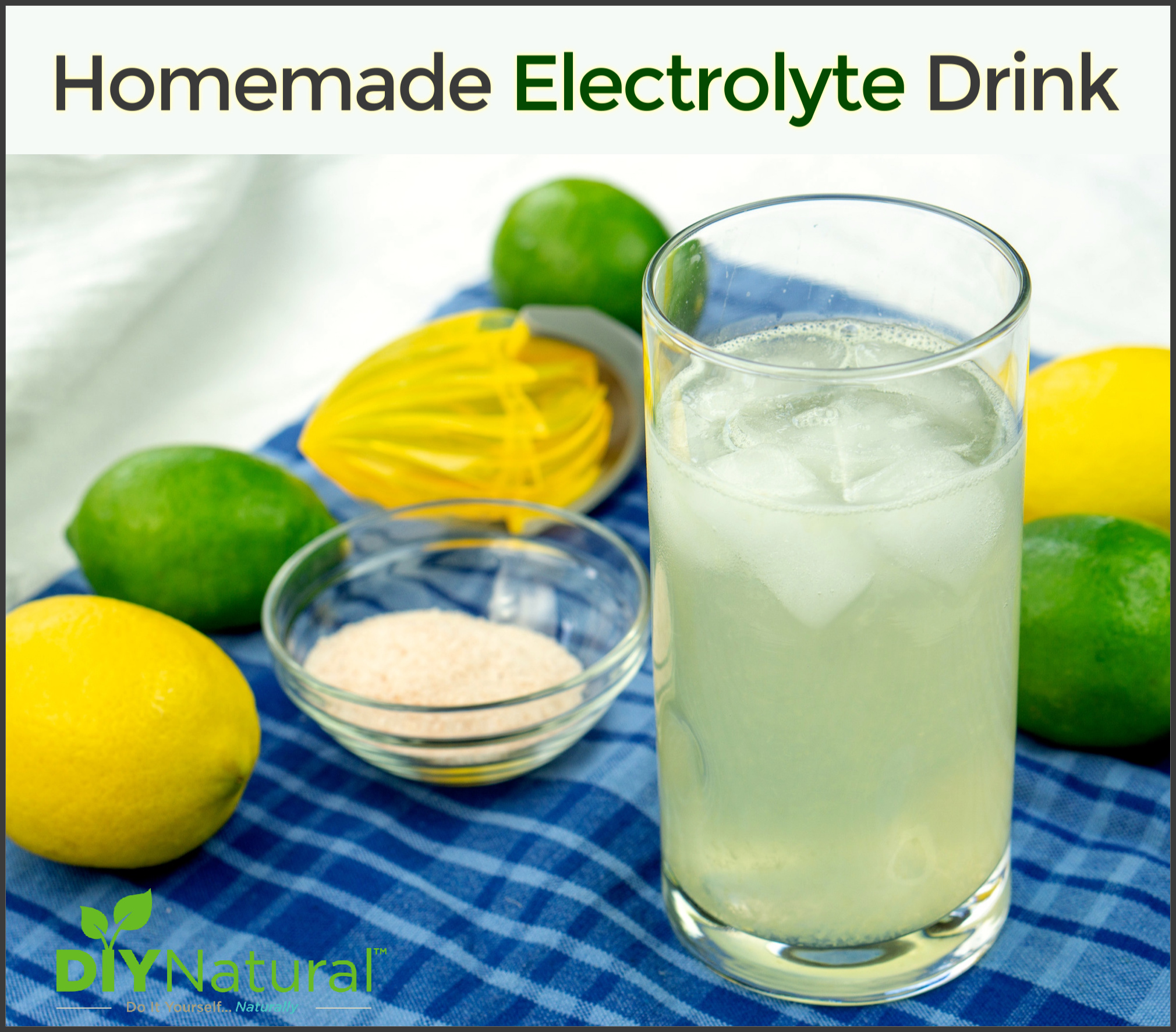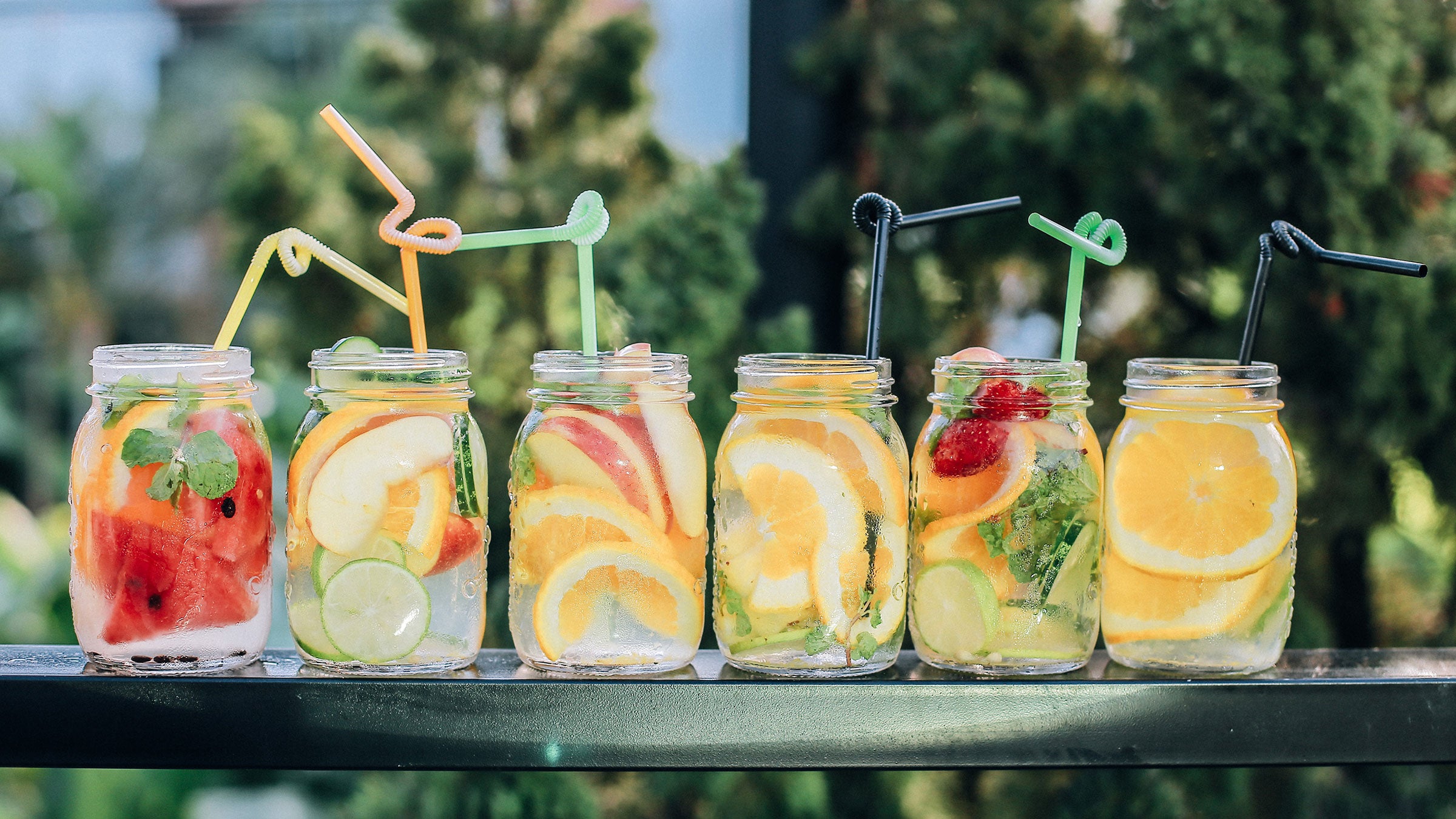Coconut water, milk, fruit juices, and smoothies are rich in electrolytes. Beverages containing electrolytes can assist with rehydration after vigorous exercise, vomiting, or diarrhea. You can also prepare a homemade electrolyte drink.
Electrolytes are minerals that carry an electrical charge when dissolved in water. They play a role in many of the body’s essential processes, including nerve impulses, pH regulation, muscle contractions, and fluid balance.
The main electrolytes the body relies on to perform these functions include:
- sodium
- potassium
- magnesium
- calcium
- phosphorus
- chloride
- bicarbonate
The amounts of electrolytes in your blood and other fluids are kept within a narrow range. If levels become too high or too low, serious health issues can develop.
You lose electrolytes and fluids every day through sweating and waste elimination. That’s why it’s important to replace them regularly with a mineral-dense diet.
Certain situations, such as intense exercise or episodes of vomiting or diarrhea, can increase electrolyte losses and may make an electrolyte beverage useful.
Below are eight electrolyte-packed drinks you might consider adding to your wellness routine.
1. Coconut water
Coconut water, also called coconut juice, is the clear fluid inside young coconuts. It’s a commonly consumed beverage and widely sold in bottles.
Coconut water is naturally lower in sugar and supplies several electrolytes, such as:
- sodium
- potassium
- calcium
- magnesium
At per cup (237 mL), it’s also a lower-calorie option compared with sodas, sweetened juices, and many sports drinks.

2. Cow’s milk
Cow’s milk delivers a good amount of electrolytes like calcium, sodium, and potassium, along with carbohydrates and protein. These macronutrients can help restore energy and support muscle repair after exercise.
Some research also indicates these properties might make milk a superior post-exercise beverage compared with many commercial sports drinks, often at a lower cost.
The advantages of milk stem from its electrolyte, carbohydrate, and protein composition, so you can pick whole, reduced-fat, or skim milk based on preference. Opt for unflavored milk to avoid excess added sugars.
Keep in mind regular cow’s milk isn’t suitable for everyone. If you’re lactose intolerant, choose a lactose-free option.
If you follow a vegan diet or have an allergy to milk proteins, avoid cow’s milk altogether.
While plant-based milks typically don’t match cow’s milk nutritionally, some studies show soy milk can have an electrolyte profile comparable to cow’s milk.
3. Watermelon water (and other fruit juices)
Watermelon water is the juice extracted from watermelon.
One cup (227 mL) of 100% watermelon juice supplies nearly of the Daily Value (DV) for potassium and magnesium and small amounts of other electrolytes like calcium and phosphorus.
Watermelon juice also contains L-citrulline. At supplemental doses, this amino acid may improve oxygen delivery, athletic performance, and muscle recovery.
However, evidence suggests the L-citrulline present in standard watermelon juice might be too low to noticeably affect exercise performance.
Other varieties of 100% fruit juice can also provide electrolytes. For instance, and juices contain potassium, magnesium, and phosphorus.
Additionally, 100% fruit juice serves as a valuable source of vitamins and antioxidants.
A major limitation of fruit juices as electrolyte replacements is that they’re usually low in sodium.
If you lose salt through prolonged sweating and rehydrate with a beverage lacking sodium, you could develop hyponatremia (low blood sodium).
To reduce that risk, add a pinch of salt to 100% fruit juice or make a homemade mix of fruit juices, salt, and water.
»Learn more:How to make your own electrolyte drink4. Smoothies
Smoothies are a convenient method to combine many electrolyte-containing foods into one drinkable mix.
Excellent sources of electrolytes include whole foods such as fruits, vegetables, nuts, seeds, legumes, and dairy — all of which blend well into nutritious smoothies.
If you’re recovering from a stomach illness and need to restore electrolytes, a smoothie may be simpler to digest and more palatable than many solid foods.
Smoothies also make effective post-workout recovery drinks because they can replace lost electrolytes and support muscle recovery when you add protein-rich ingredients like whey protein powder.
However, consuming a smoothie during intense or prolonged exercise might not be ideal; it could make you feel too full to continue your workout comfortably.
Therefore, it’s usually best to drink a smoothie at least an hour before or right after exercising.
»Learn more:How to make a strawberry banana high protein smoothie5. Electrolyte-infused waters
Electrolyte-fortified water can be a low-calorie option to restore electrolytes and maintain hydration.
That said, not all electrolyte waters are equal.
In the United States, 2 liters of typical tap water supplies the following percentages of daily mineral needs:
- Calcium: 6%
- Magnesium: 5%
- Sodium: 3%
Some commercial electrolyte-enhanced bottled waters can be expensive yet don’t necessarily contain significantly more minerals and, in some cases, may contain less.
However, certain beverages are formulated specifically to aid hydration and mineral replenishment and do contain higher electrolyte levels. These may be worthwhile depending on your reason for using an electrolyte drink.
Keep in mind many of these waters are also high in sugar, since they’re designed to replace carbohydrate stores during extended exercise. If you don’t want extra sugar calories, choose options with minimal or no added sugar.
You can also flavor your water with fresh fruit and herbs to create a homemade electrolyte-infused drink.

6. Electrolyte tablets
Electrolyte tablets offer a handy, affordable, and portable way to prepare an electrolyte drink.
Simply drop a tablet into water and stir or shake to dissolve it.
Most tablets include sodium, potassium, magnesium, and calcium, though amounts vary by brand.
They are usually low-calorie, have little to no added sugar, and come in various fruity flavors.
Some brands may also contain caffeine or extra vitamins, so check ingredient lists if you want to avoid those additions.
7. Sports drinks
Commercial sports drinks such as Gatorade and Powerade have been popular electrolyte beverages since the 1980s.
They can be useful for endurance athletes who require easily digested carbohydrates, fluids, and electrolytes to sustain hydration and energy during prolonged events or training.
Nevertheless, commercial sports drinks have downsides. They often contain artificial colors, flavors, and added sugars.
For example, a 12-ounce (355-mL) serving of or contains more than 20 grams (g) of added sugar. That’s of the recommended daily amount.
Low- or no-sugar versions aren’t necessarily a much better choice.
Although they reduce calories and don’t include added sugar, they frequently use sugar alcohols or artificial sweeteners instead. These can cause unpleasant digestive symptoms like diarrhea, gas, and bloating in some people.
8. Pedialyte
Pedialyte is a rehydration solution marketed for children but is suitable for adults as well.
It’s formulated to help replace fluids lost from diarrhea or vomiting and contains sodium, chloride, and potassium.
Note that one liter of some Pedialyte formulations contains 25 g of added sugars, which exceeds half of the suggested daily intake.
Is an electrolyte drink right for you?
Electrolyte beverages are often promoted to the general public, but most people probably don’t need them regularly.
Moderately active individuals can generally stay hydrated and maintain electrolyte balance by eating a varied, nutrient-rich diet and drinking enough water.
The Academy of Nutrition and Dietetics suggests the following daily water intake:
- Males: 3.7 L (15.5 cups)
- Females: 2.7 L (11.5 cups)
Still, electrolyte drinks may be necessary if you’re dehydrated or at greater risk of dehydration, such as when:
- engaging in prolonged, intense exercise
- spending long periods in hot conditions
- having diarrhea or vomiting
You might need an electrolyte beverage if you notice signs of mild to moderate dehydration, including:
- dry mouth and tongue
- thirst
- fatigue
- sunken eyes
- urinating less than usual
- dizziness
- dark-colored urine
If symptoms worsen, consult a healthcare provider who can recommend an appropriate treatment plan.
The bottom line
Electrolytes are minerals that support vital bodily functions like fluid balance, muscle contraction, pH regulation, and nerve signaling.
Drinks such as coconut water, cow’s milk, 100% fruit juices, and sports beverages can help with hydration and replacing electrolytes.
For most people, a balanced diet and adequate water intake are sufficient to maintain electrolyte balance. However, rapid fluid losses from heavy sweating or illness may justify using an electrolyte drink.
Monitoring fluid intake and recognizing early symptoms of dehydration can help you decide whether adding an electrolyte beverage to your routine is appropriate.


















Leave a Reply
You must be logged in to post a comment.